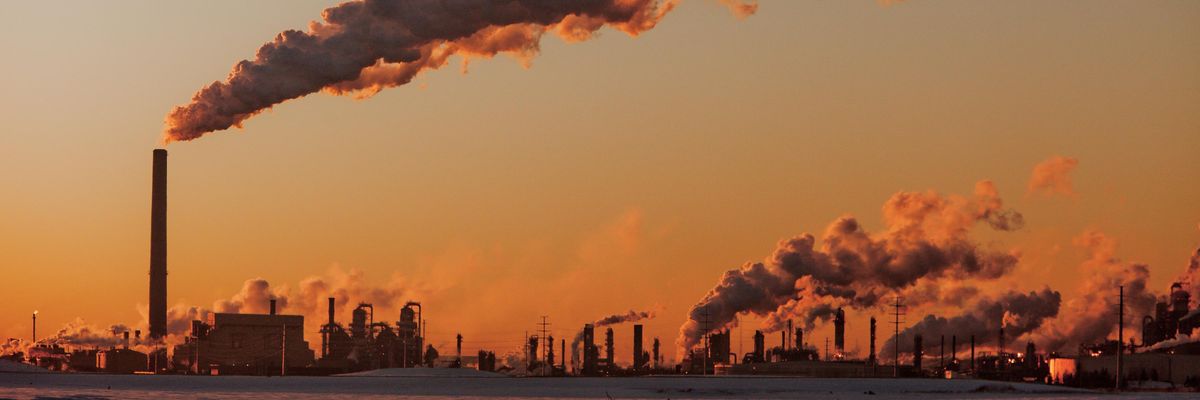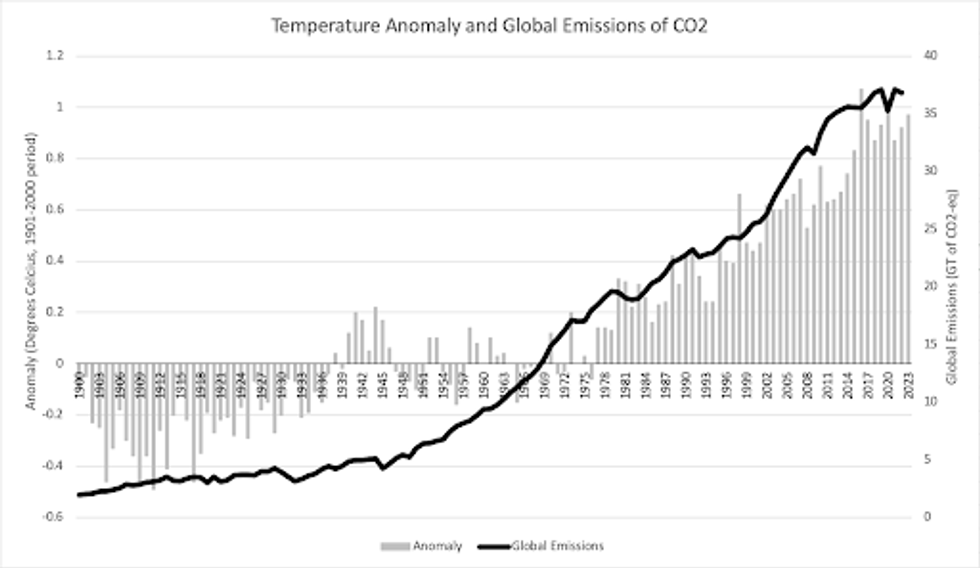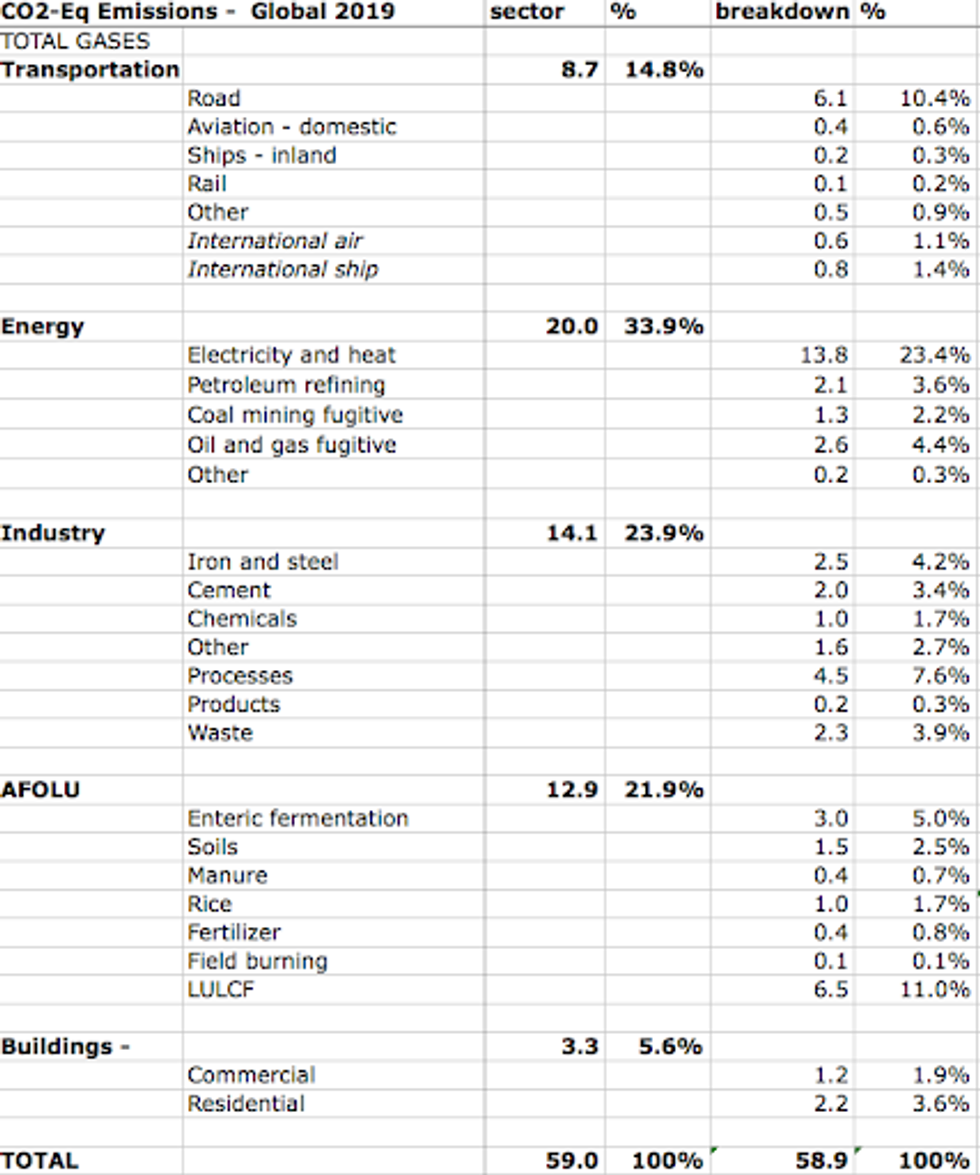Sultan Ahmed Al Jaber of the United Arab Emirates, who is currently presiding over the COP28 climate talks in Dubai (as well as presiding over the UAE’s state oil company, ADNOC) was quoted last week as saying “there is no science out there… that says the phaseout of fossil fuel is what’s going to achieve 1.5°C.”
His remarks were immediately derided by climate scientists, as well as by U.N. Secretary-General Antonio Guterres, who declared, “The science is clear: The 1.5°C limit is only possible if we ultimately stop burning all fossil fuels. Not reduce, not abate. Phase out, with a clear timeframe.”
So what exactly is the science behind the need to completely stop the burning of fossil fuels? Thanks to the work of thousands of climate scientists from all over the world, we now know with absolute certainty that rising levels of carbon dioxide and other greenhouse gases in the atmosphere are leading directly to rising average global temperatures.

We also know, within various margins of error, exactly where those emissions are coming from. The burning of fossil fuels to generate electricity contributes almost a quarter (23%) of total greenhouse gas emissions globally. Industry contributes another 23% of total greenhouse gas emissions, and this is almost exclusively from the burning of fossil fuels to produce steel, cement, and other products.
The extraction, refining and transportation of fossil fuels themselves contributes a further 10% of total emissions. The burning of fossil fuels to move cars and other vehicles along our roads contributes about 10% of total greenhouse gas emissions. Aviation and shipping contribute another 5%. The burning of fossil fuels to heat buildings contributes 5%. This all adds up to more than 75% of all greenhouse gas emissions coming from the burning of fossil fuels.

In order to keep global warming to within 1.5°C of the preindustrial baseline average, the Intergovernmental Panel on Climate Change (IPCC) has determined that the world will need to cut greenhouse gas emissions roughly in half, from nearly 60 billion tons of carbon per year today to roughly 30 billion tons by 2030, and reach net-zero emissions by 2050.
Anyone can do the math. There is literally no way to achieve either of these targets without drastic reductions in the burning of fossil fuels currently being used to produce electricity, fuel industry, move cars, and heat buildings. The only serious question is whether the world can achieve net-zero by 2050 without phasing out the burning of fossil fuels completely, as the U.N. secretary-general has suggested.
The meaning of net-zero is that whatever carbon emissions are still going into the atmosphere by 2050 must be cancelled out by an equivalent amount of carbon sequestration that pulls the carbon back out of the atmosphere. The dream of fossil fuel executives like Al Jaber is that new technologies, as yet unproven to work at scale, will enable industries to extract the carbon back out of the atmosphere as fast as they spew it into the atmosphere, thus allowing the burning of fossil fuels to continue indefinitely and still achieve the “net-zero” target.
The only thing in the way of phasing out fossil fuels and saving the planet from climate catastrophe is the belief that this is somehow not possible.
Even with billions more dollars for various “carbon capture and storage” projects coming from the Inflation Reduction Act, the amount of carbon that could conceivably be taken out of the atmosphere by 2050 is comparatively small relative to the 60 billion tons per year currently going in. The bigger problem is that greenhouse gas emissions other than those from the burning of fossil fuels will be almost impossible to eliminate by 2050. These include 3 billion tons of carbon-equivalent methane coming from enteric fermentation (belching cattle); another 2 billion from industrial and municipal wastewater, landfills, and sewage treatment; and various other hard-to-eliminate sources.
A massive shift to regenerative farming practices and to more vegetable-based diets can certainly make a difference, but with as many as 2 billion subsistence farmers in the world, and billions more with serious food insecurity, it is scarcely imaginable that the world could make the kinds of transformations needed to eliminate greenhouse gas emissions from the agricultural and waste sectors by 2050.
That leaves us with the obvious alternative to reaching net-zero by 2050: the complete phasing out of fossil fuel burning. This is not only the most obvious route to cutting emissions to half their current level by 2030 and to net-zero by 2050. Phasing out the burning of fossil fuels is also something we can easily do and we can begin doing it right now! As Mark Z Jacobson says in the title of his new book on the prospects for producing 100% of the world’s electricity from water, wind, and sun, “No miracles needed” to do this. We have the technologies. We have the resources. We have the skills. The price is affordable. The transition is doable.
The only thing in the way of phasing out fossil fuels and saving the planet from climate catastrophe is the belief that this is somehow not possible. It’s time we moved beyond that to the belief that this is absolutely essential—and the time to start phasing out fossil fuels is right now.



